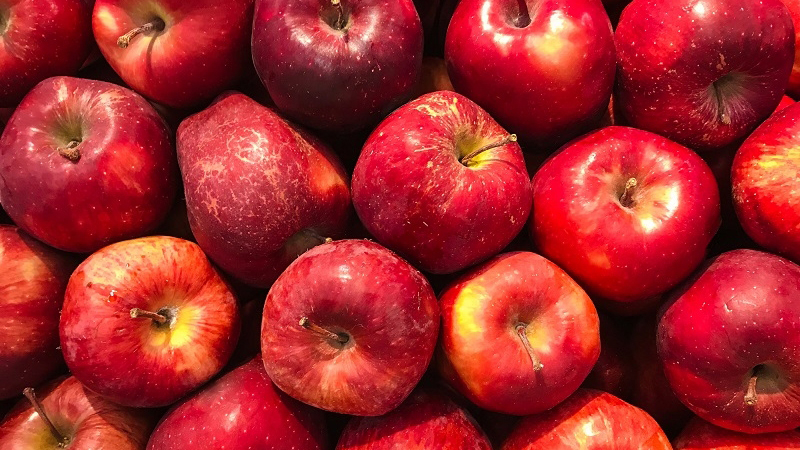Growing Produce in High Tunnels? Have Zero Tolerance for Disease
Editor’s Note: McGrath is in the Department of Plant Pathology and Plant-Microbe Biology at Cornell University.
Keeping crops free of disease is the goal of all growers, including those producing in high tunnels. What follows are 20 practices that will reduce the chances of pathogens taking over when growing under cover.
1. Locate and orient high tunnels so they will receive good sunlight and air movement. An east to west orientation, perpendicular to prevailing winds, and away from shade of trees or buildings is ideal.
2. Choose a roof design that minimizes condensation dripping on plants. Condensation occurs on tunnel plastic over night because as temperature decreases, air can hold less moisture. Also vent tunnels early in the morning to dry condensation.
3. Be sure to select seed that is pathogen-free.
4. Plant resistant varieties.
5. Add compost and other sources of organic matter to soil to promote beneficial microbes.
6. Cover the ground with plastic mulch. This raises soil temperature and prevents evaporation of soil moisture, plus serves as a barrier for pathogens in soil that infect above-ground plant parts.
7. Use raised beds to manage soil moisture.
8. Practice good sanitation. Clean and disinfect tunnel structure and planting materials (including tools), and wear gloves. Minimize worker movement between tunnels to avoid moving pathogens.
9. Avoid moving soil on shoes or tools from fields into high tunnels and between tunnels.
10. Separate plantings of a crop inside and nearby when feasible. An older planting can be a source of pathogens for a younger planting in the same high tunnel; however, this needs to be balanced with crop rotation needs.
11. Grow ornamental crops separately. They can be sources of some viruses, notably tomato spotted wilt virus.
12. Provide appropriate fertilization (especially nitrogen; avoid excess), soil pH, temperature for good growth, and consistent soil moisture.
13. Control weeds and volunteer crop plants inside and around
high tunnels.
14. Minimize humidity by using wide rows and plant spacing, fans, ridge venting, open sides. Orient rows to air movement, avoid overwatering, irrigate with drip, and prune old leaves and dead tissue.
15. Rogue affected plants and plant tissue when appropriate and feasible. This is especially important when causal pathogens can survive a long time in the soil.
16. Use plants grafted onto resistant rootstock for soilborne pathogens.
17. Apply fungicides. Start at or before first symptoms. Ensure disease is correctly identified. Apply regularly, maximizing coverage. Check state regulations about pesticide use in high tunnels, which many consider to be a greenhouse. A few states do not if the sides are rolled up at the time of the application. Choose product labeled for target disease. Check label for restrictions on greenhouse use.
18. Remove crop debris including roots after harvest. Dispose far from high tunnels.
19. Rotate where crops are produced. The goal of rotation is to manage soilborne pathogens. Clean rototillers and other soil tools between production units. This can be challenging when these units are within one high tunnel, but in this situation it is absolutely essential as moving soil between units could defeat the purpose of rotation.
20. Grow a biofumigant cover crop to manage soilborne path-ogens when there is sufficient time between crops.
See page 2 for more on diseases occurring in high tunnels and cultural management practices.
Disease Occurrence in High Tunnels
Principles dictating disease occurrence are applicable to all cropping situations. Thus in addition to susceptible plants, pathogen must be present in a high tunnel and conditions must be favorable for development of a disease in order for it to occur. To enable disease to develop, conditions must favor infection and also pathogen spread.
Ability of a pathogen to enter a high tunnel is an important factor to consider in determining what diseases could occur. The ways in which a pathogen can get into a high tunnel include: 1. wind-dispersed spores blown in through open vents or sides, 2. insect vectors of pathogens that fly or are blown through these openings, 3. infested seed or transplants, 4. contaminated soil brought in on shoes or tools, and 5. contaminated tools such as pruners.
Once a pathogen has come into a high tunnel it can survive there between crops in alternative weed hosts, in infested soil or crop debris, and on contaminated planting and production supplies. Fortunately all these means are not options for every pathogen.
Most fungal and bacterial pathogens affecting foliage require a certain amount of time with free moisture (wetness) in order to infect. Those needing a period of time that plant tissue is wet are less likely to occur in a high tunnel than in field-produced crops, unless overhead irrigation is used or there is dripping water due to extensive condensation. These include tomato early blight. Pathogens primarily dispersed by splashing water, such as tomato bacterial spot and Septoria leaf spot, are also less likely to occur in a high tunnel unless overhead irrigation is used. Among the diseases most likely to occur in high tunnels are those caused by pathogens that can enter plants through wounds, such as tomato bacterial canker, and those caused by pathogens that only need high humidity to infect, which include tomato leaf mold, late blight, powdery mildew, and downy mildew.
Viruses do not have a moisture requirement. Diseases they cause are among the more common in greenhouse crops. The vector (typically an insect) needs to be present for viral diseases to develop.
Some diseases are more likely to occur because conditions are more favorable in high tunnels than outdoors. These include gray mold, leaf mold, powdery mildew, and pith necrosis in tomato.
Diseases caused by soil-borne pathogens infecting roots can also be important in tunnels.









